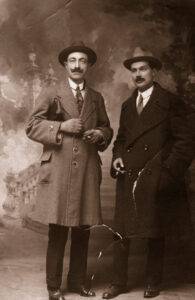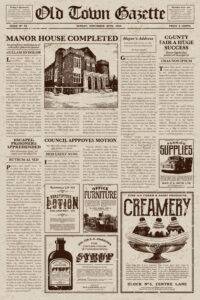Written by Haley Boyce

Where creative writing leans on your imagination and a hearty sense of artistic whimsy, American Psychological Association (APA) style is specifically designed to communicate facts without room for interpretation.
There are two different situations in which a writer would use APA style:
Experimental Research
Scientific research following a rigid design that includes making an observation, forming a hypothesis, making a prediction, conducting an experiment, and analyzing the results. Information such as this is detailed and dense. Writing with APA style makes it easier to comprehend.
Literature Review
If you’re a student writing a summary of research that has already been conducted by someone else about a specific question or topic, you’re writing a literature review (not to be confused with literary analysis, which is something else entirely).
What Does APA Stand For in Writing?
APA style is a product of the American Psychological Association. The association asserts that APA style was developed to write with both uniformity and consistency. It’s designed to allow readers to:
- Focus on the ideas being presented without much thought about formatting
- Scan written work to quickly gather key points and sources
Because one of the goals of APA style is to produce precise, readable communication, you will often find this to be the preferred style in papers written for academic sciences and social sciences (including psychology, sociology, economics, anthropology, political science, economics, and criminal justice).
The APA Style Dates Back to a 1929 Conference of Psychologists, Anthropologists, and Business Leaders
 Variations and inconsistencies in article length, format, and focus became problematic for publishers who were losing money and time as they tried to make sense of submissions. Because academic and scientific writing is meant to inform, without an agreed upon standard, researchers were at risk of miscommunicating their message and thus losing one of the main purposes of their work. Those at the conference sought to fix this by meeting for two days to create a set of writing standards meant to make scientific writing easier to read. The result was a seven page article published by the Conference of Editors and Business Managers of Anthropological and Psychological Periodicals, appearing in the American Psychological Association’s “Psychological Bulletin”.
Variations and inconsistencies in article length, format, and focus became problematic for publishers who were losing money and time as they tried to make sense of submissions. Because academic and scientific writing is meant to inform, without an agreed upon standard, researchers were at risk of miscommunicating their message and thus losing one of the main purposes of their work. Those at the conference sought to fix this by meeting for two days to create a set of writing standards meant to make scientific writing easier to read. The result was a seven page article published by the Conference of Editors and Business Managers of Anthropological and Psychological Periodicals, appearing in the American Psychological Association’s “Psychological Bulletin”.
When the article was first published, the basics of APA were introduced to the world. To this day, APA style has encouraged writers to:
- Keep the argument brief
- Create an organized structure by using headings
- Subdivide the article or essay into three sections: Introduction, statement of results, and discussion
- Cite all references and do so in a specific way
- How to present tables and figures
Since its inception, APA style has evolved with the times. The original APA style was revised twice – first in 1957, then again ten years later. Following editions known as “The Publication Manual of the American Psychological Association” were published in 1974, 1983, 1994, 2001, 2009, and 2019.
Nearly one hundred years of guidance for writers in academia and the sciences. All thanks to the American Psychology Association, the APA.
At this point it definitely sounds like you’ll only ever see the APA writing style in the academics or in fancy journals with jargony, sophisticated names – and it’s true. You will. But what’s cool about APA style (you heard me – APA style is cool) is that it’s actually more prevalent in our everyday lives than you might realize.
APA Style Versus AP Style
 There’s a major difference between APA and AP styles and it’s a lot more than one letter. The Associated Press (AP) style differs from APA style in that it is intended for news writing. AP has its own set of rules focused on providing consistency, clarity, brevity, and accuracy.
There’s a major difference between APA and AP styles and it’s a lot more than one letter. The Associated Press (AP) style differs from APA style in that it is intended for news writing. AP has its own set of rules focused on providing consistency, clarity, brevity, and accuracy.
The Associated Press formed in New York City when, in 1846, four newspapers teamed up to report news of the Mexican-American War. Today, the size of the group grew to include 248 news bureaus across 99 countries. The Associated Press Stylebook was first published in 1977, setting the standard for news writing in the United States.
Even though their standards are different, both APA and AP styles have a set of unique standards for things like punctuation, names, abbreviations and acronyms, books, periodicals, and references. However, AP style also calls for a whole new set of rules for things related specifically to news reporting. This includes acronyms, addresses, ages, dates, months, years, days of the week, datelines, dimensions of height and weight, distances, and cities and states.
APA style set the standard for how critical findings are shared with the rest of the world. It’s meant to communicate factual information in a way that is simple (or simpler) to understand.
Perhaps one of the most common places to find APA style in an everyday situation or interest is in the nonfiction genre of self-help books. As the style dictates, titles are to the point and the content is surmisable before peeling back the cover. Some examples for your perusal:
- When Your Child Has a Chronic Medical Illness: A Guide For the Parenting Journey by Sileo, Frank J.; Potter, Carol S.
- Adoption Specific Therapy: A Guide to Helping Adopted Families and Their Children Thrive by Waterman, Jill; Langley, Audra K.; Miranda, Jeanne; Riley, Debbie B.
- Be the Change by Friedman-Wheeler, Dara G.; Bodenlos, Jamie
- Grief Isn’t Something to Get Over: Finding a Home For Memories and Emotions After Losing a Loved One by Lamia, Mary C.
APA style is found in informational texts written for children too! For example:
- Kid Confident by Bonnie Zucker
- Psychology for Kids: The Science of the Mind and Behavior by Toner, Jacqueline B.; Freeland, Claire A. B.
- Find Your Fierce by Sperling, Jacqueline
- Lobe Your Brain: What Matters About Your Grey Matter by Boucher Gill, Leanne
Of course, APA style serves its purposes in more publications than books alone. Writers are encouraged to use APA style in research-based journals such as Peace and Conflict: Journal of Peace Psychology, Journal of Experimental Psychology: Learning, Memory, and Cognition, Journal of Threat Assessment and Management, and Psychology, Public Policy, and Law.
No matter the type of fact-centered publication, APA style calls for a certain way of presenting and incorporating research results and references.
Among numerous other rules for publication, the seventh (and most recent) edition of The Publication Manual of the American Psychological Association addresses the following:
Citations:
- Each citation has two parts – (1) the in-text citation and (2) the reference list entry located on the references page at the end of the paper
- When using a direct quote from a text written by someone else, an in-text citation is required. In parenthesis after the quote (but before the punctuation end mark), include the author name, year of publication, and pages referenced. It should look something like: (Smith, 2022, p. 39)
- Tiny but important detail: If what you are quoting begins on one page and ends on another, the plural abbreviation for the word pages is pp. (Smith, 2022, pp. 39-40)
- When referring to work done in another paper, either written by you or someone else, but you are not using their sentences word for word (also known as a direct quote), you will need to make reference to the author and year of publication.
Italics:
- In APA style, the way a word is used dictates whether it should be italicized.
- Use italics when writing the titles of books, reports, webpages, and other stand-alone works; titles of periodicals and periodical volume numbers (note: do not italicize the comma between volume numbers, as they are not part of the title); English letters used as statistical symbols or algebraic variables; variables of a scale (1 = good); first use of words, phrases, or abbreviations from a different language that a reader may not be familiar with
- Just when it seems like you may as well italicize everything, here’s a (very brief) list of what to keep in standard font:
- Do not italicize titles of book series. If you are referencing one book out of the whole series, go ahead and italicize it. But if you’re referencing the entire series, do not. Rather, simply capitalize the first letter of each word in the title and keep the font standard.
- The end mark after an italicized word, the punctuation between italicized words, phrases, or between elements of a reference list.
- If a word, phrase, or abbreviation you are using from a different language appears in the English dictionary
- In APA style, the way a word is used dictates whether it should be italicized.
Reference Page:
- Because the nature of your writing is based on fact, you must include a list of the sources that informed your work. This list should be the very last page of your report (or article or book, etc.). A few rules of thumb:
- References must be alphabetized by the last name of the author of each source
- Note the type of source you are referencing and use italics or quotation marks around the title as necessary
- Give the last name and first and middle initials for all authors of a source. In the event that a source is written by more than one author, use the same treatment for all of the authors’ names. Include no more than twenty author names per reference.
- Because the nature of your writing is based on fact, you must include a list of the sources that informed your work. This list should be the very last page of your report (or article or book, etc.). A few rules of thumb:
MLA Versus APA
 All this talk about APA might have you thinking, “Hold on a sec. If APA is used for the academic and social sciences, what format do I use when I’m writing about . . . anything else? Enter: The Modern Language Association (MLA). Where APA style is best suited for technical and scientific research, MLA works well with humanities and literature. Things like embedded quotes and citing sources are present in both styles, but how they are executed will vary. Where APA style is meant to communicate straight fact usually discovered through scientific research, MLA is meant to lend credibility to the writer’s own argument or interpretation through the citation of a text.
All this talk about APA might have you thinking, “Hold on a sec. If APA is used for the academic and social sciences, what format do I use when I’m writing about . . . anything else? Enter: The Modern Language Association (MLA). Where APA style is best suited for technical and scientific research, MLA works well with humanities and literature. Things like embedded quotes and citing sources are present in both styles, but how they are executed will vary. Where APA style is meant to communicate straight fact usually discovered through scientific research, MLA is meant to lend credibility to the writer’s own argument or interpretation through the citation of a text.
Why is APA Formatting Used in Academic Writing?
First things first: APA is used in certain types of academic writing. It’s a great style with uses that make sense for a lot of scenarios in academic writing, but there are times when writing with APA style doesn’t fit the assignment. Creative writing programs, for instance, will most likely require you to use MLA style, as the essays and creative nonfiction you write will be dependent on your interpretation of other texts.
APA style is used in academic writing when an assignment involves communicating knowledge about something that has been researched, and the reader needs to understand the data or outcome. This does not apply to literary analysis (close-reading of a text).
In academics, APA style is used when a student is tasked with conducting research, then sharing what they’ve found.
Depending on the class, the research might involve studying research that has already been done in order to show your understanding of the topic, or a student could be conducting research based on an observation and hypothesis of their own. In both cases, APA style is suggested to communicate what is often a complex topic. Essentially, APA style is used in academics in order to keep the research and discoveries front and center without getting lost in things that are commonly found in MLA style, like figurative language and other literary devices.
The American Psychological Association has put together a checklist specifically meant for the formatting of student papers. Details include step-by-step formatting of:
The Title Page
Format (line spacing and font), title, author name, author affiliation, course number and name, instructor name, due date, and page header
Paper Format
Page header, font and font size, line spacing, margins, paragraph alignment and indentation, and paper length
Paper Organization
Introduction, text, page order, headings, and section labels
Writing Style
Continuity, conciseness, clarity
Grammar
Verb tense, voice and mood, subject and verb agreement, pronouns
Bias-free Language
The pro-tip from APA is to eliminate it. One of the purposes of APA style is to promote inclusivity, so assure your paper is written with language that does not discriminate against age, disability, gender, participation in research, racial and ethnic identity, sexual orientation, socioeconomic status, and intersectionality
Mechanics of Style
Punctuation, quotation marks, italics, spelling and hyphenation, capitalization, abbreviations, numbers, statistics, and lists
Tables and Figures
General guidelines, tables, figures
In-text Citations
Details include when to make a citation, which sources to include, spelling of author names and publications, paraphrasing as much as possible, cite appropriately to avoid plagiarism, how to cite texts by one author, two authors, or three or more authors, parenthetical versus narrative citations (using parentheses to cite your text versus introducing the author name in a sentence with the publication year in parentheses), and limiting the use of direct quotes (and providing guidelines for the times that you must with either a short or block quote)
References
Formatting, corresponding in-text citations, appropriate reference entry depending on the type of source being referenced (journal article, book, etc.), the four elements of a reference entry (author, date, title, source), punctuation, how to reference texts with more than one author, capitalization, and how to reference web addresses





